Bird baths are delightful additions to any garden, offering our feathered friends a place to drink, bathe, and socialize. While they seem simple enough to maintain, many well-intentioned bird enthusiasts make crucial mistakes that can discourage birds from visiting or even pose health risks. Creating a bird-friendly watering station requires more thought than simply filling a decorative basin with water. By understanding common pitfalls, you can transform your bird bath into a thriving hub of avian activity. Let’s explore the top seven mistakes to avoid when setting up and maintaining your bird bath, ensuring it remains a safe and attractive destination for local birds year-round.
1. Choosing the Wrong Location
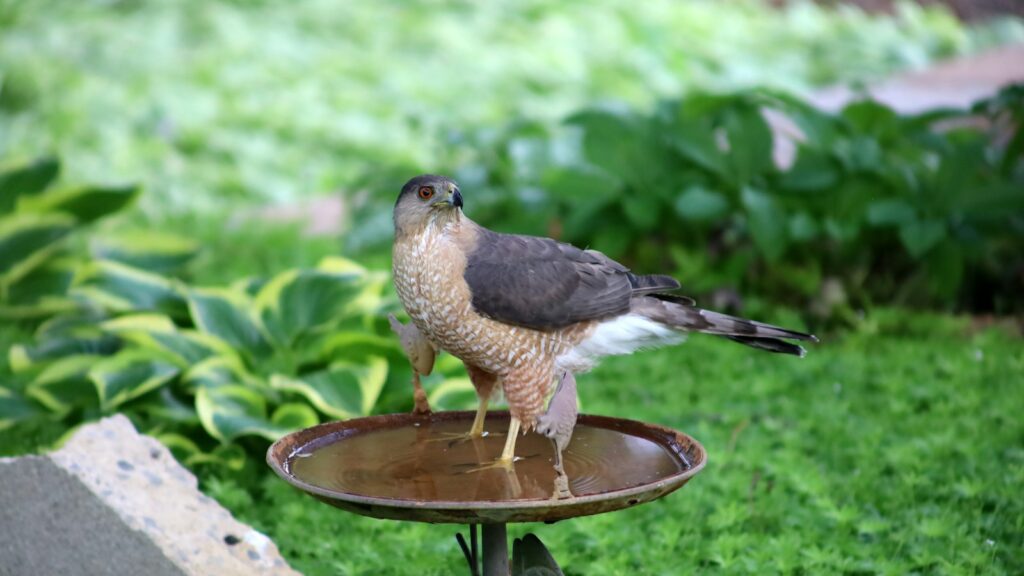
The placement of your bird bath significantly impacts how frequently birds will use it. Many bird enthusiasts make the mistake of positioning their bird baths in open, exposed areas without considering predator threats. Birds are naturally cautious creatures and prefer bathing spots that offer quick escape routes to nearby trees or shrubs in case of danger. However, don’t place the bath directly under trees where falling leaves and debris will constantly dirty the water. Aim for a location with dappled shade that’s visible from your viewing window but still offers birds a sense of security with cover nearby. The ideal spot provides some protection from harsh elements while remaining open enough for birds to spot potential predators approaching.
2. Making the Water Too Deep
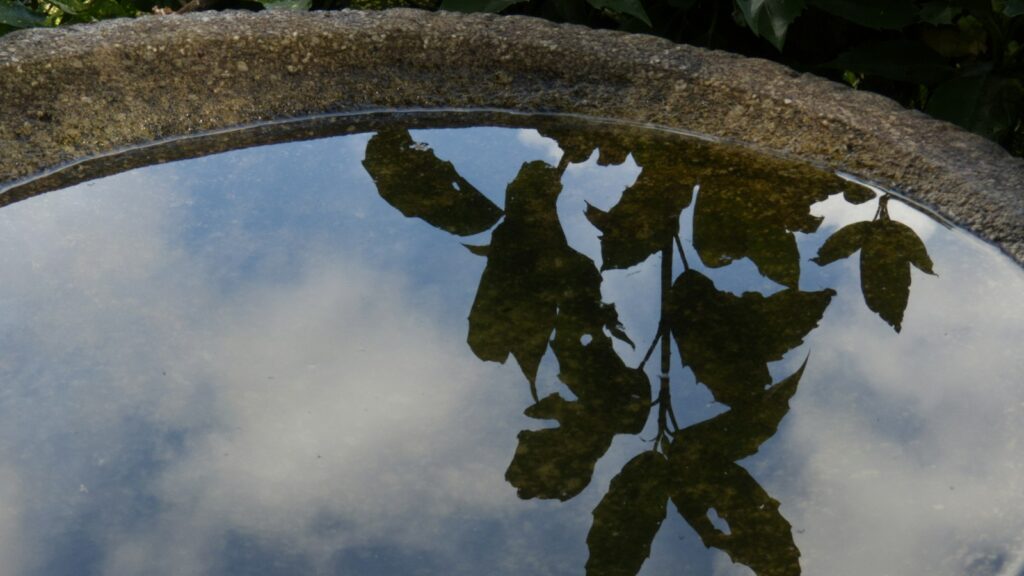
One of the most common mistakes is filling a bird bath with water that’s too deep for smaller birds to use safely. Most garden birds prefer shallow water ranging from just half an inch to no more than two inches deep. Deeper basins intimidate smaller species like finches and warblers, effectively excluding them from your bird bath. Consider that birds don’t swim like humans—they’re looking to stand safely while splashing water over their feathers. A bath with gradually sloping sides or variable depths allows birds of different sizes to find their comfort zone. Adding a few flat stones or pebbles to create shallow standing areas can make your bird bath more accessible to a wider variety of species.
3. Neglecting Regular Cleaning
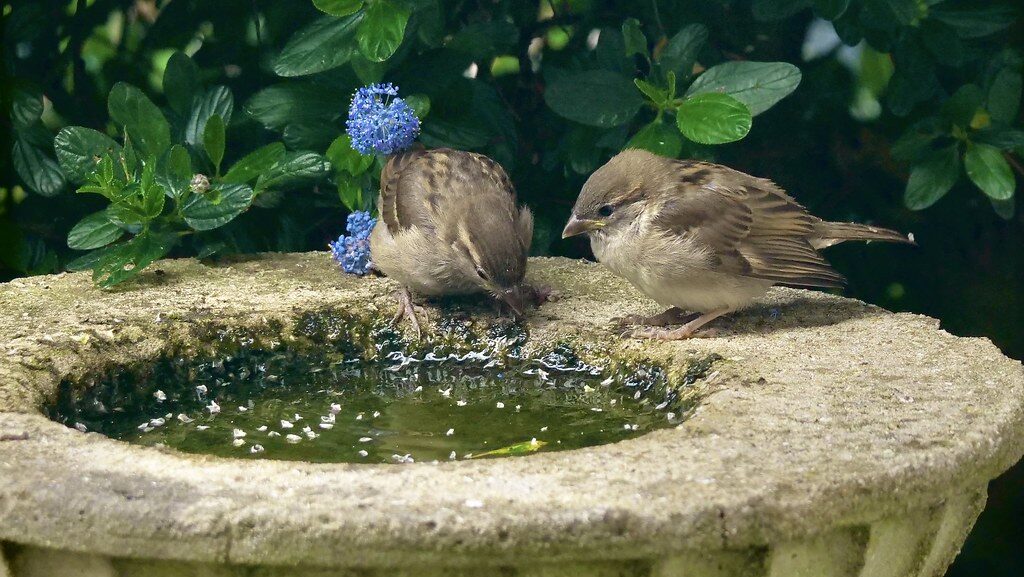
Stagnant, dirty water is perhaps the biggest deterrent for birds and poses serious health risks. Many bird lovers fill their baths but then forget the crucial step of regular cleaning. Bird droppings, algae, and debris quickly accumulate, creating a breeding ground for harmful bacteria and diseases that can spread through avian populations. Most experts recommend completely changing the water at least every two to three days during warm weather and once a week during cooler months. Monthly deep cleaning with a mild solution of nine parts water to one part vinegar helps remove mineral deposits and stubborn grime. After cleaning, always rinse thoroughly to remove any cleaning solution residues that might harm birds.
4. Overlooking Winter Maintenance
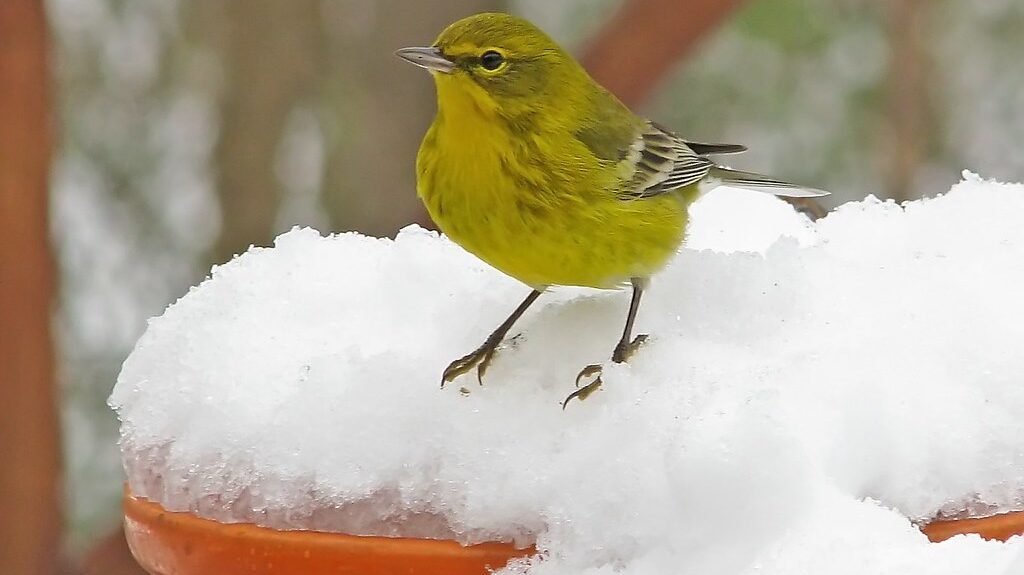
Many bird enthusiasts mistakenly pack away their bird baths when cold weather arrives, not realizing that winter is when birds most desperately need reliable water sources. In freezing temperatures, natural water sources become scarce, making your maintained bird bath an essential resource. Simply abandoning your bird bath during winter months means missing out on helping birds during their time of greatest need. Invest in a bird bath heater designed specifically for this purpose, or commit to manually changing frozen water daily. Another option is to use a deeper basin in winter (though still with shallow edges) as it takes longer to freeze completely. Remember that providing water during freezing conditions might attract more species to your yard than at any other time of year.
5. Using Inappropriate Materials
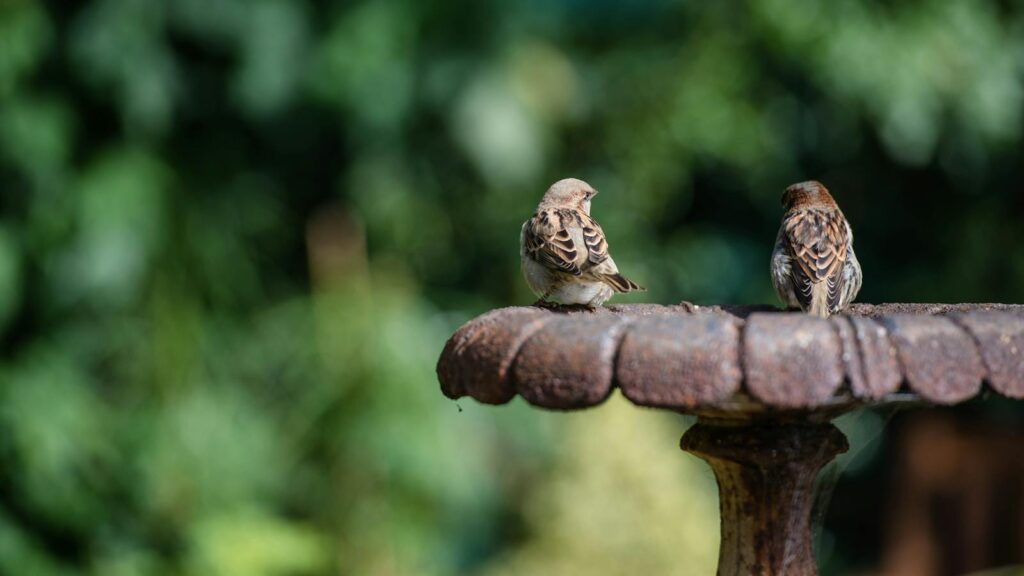
The material of your bird bath matters more than you might think. Metal baths can become dangerously hot in summer sun, potentially scalding birds’ sensitive feet or heating water to uncomfortable temperatures. Conversely, some decorative baths made of plastic or certain painted surfaces may leach chemicals into the water over time. Dark-colored basins absorb more heat and promote faster algae growth, requiring more frequent cleaning. Instead, opt for bird baths made from natural materials like ceramic, concrete, or high-quality resin that won’t deteriorate with exposure to the elements. These materials stay cooler in summer heat and are generally safer for birds. Look for rough-textured surfaces rather than slippery ones to provide better footing for bathing birds.
6. Failing to Create Movement
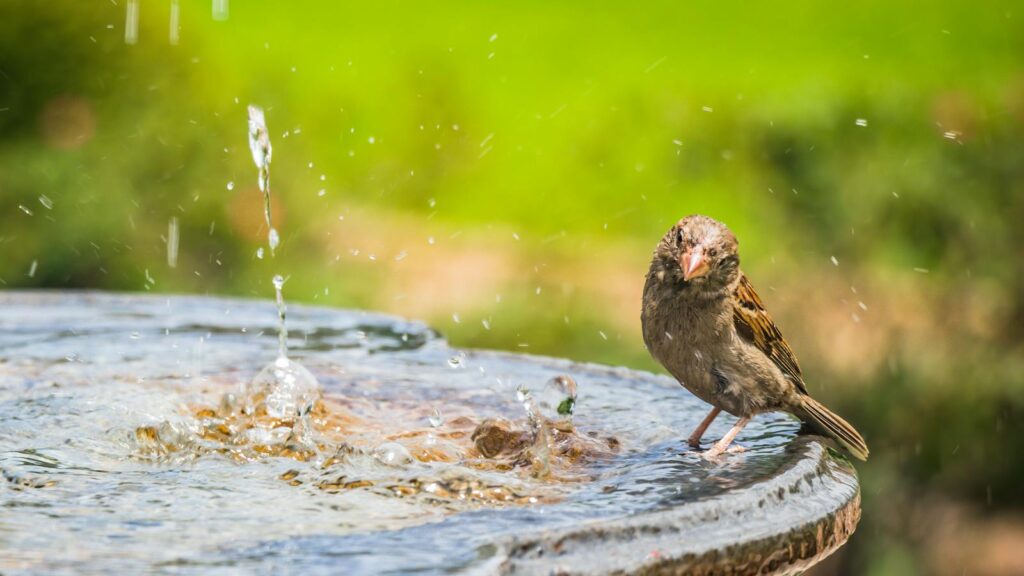
Still water doesn’t catch a bird’s eye from a distance—birds are naturally attracted to the sound and sight of moving water. Many bird bath owners miss the opportunity to increase avian visitors by failing to incorporate any water movement in their setup. Birds are instinctively drawn to the splashing, dripping, or rippling of water, which signals its presence from afar and suggests freshness. Simple solutions include purchasing solar-powered fountains that create gentle bubbling or adding a dripper attachment that releases occasional drops to create ripples. Even hanging a container with a tiny hole above your bath to create a slow drip can dramatically increase bird visits. This movement not only attracts more birds but also helps prevent mosquitoes from laying eggs in your bird bath.
7. Ignoring Surrounding Landscaping
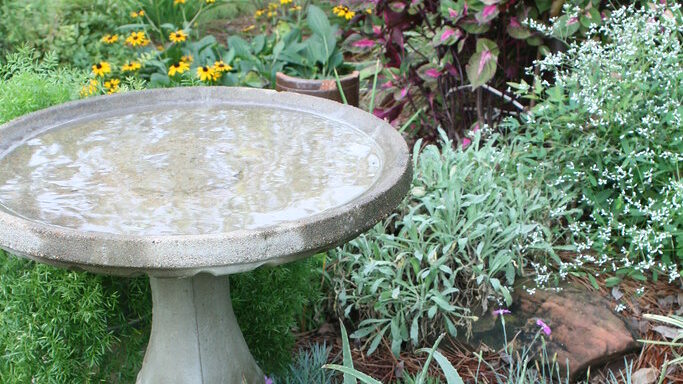
A common oversight is treating the bird bath as an isolated feature rather than part of an integrated habitat. Birds prefer environments that meet multiple needs simultaneously—water, food, and shelter in proximity. Without companion plantings nearby, your bird bath may seem too exposed or disconnected from the natural landscape birds prefer. Create a bird-friendly zone around your bath by incorporating native plants that provide seeds, berries, or attract insects that birds feed on. Consider adding a brush pile or dense shrubs within 10-15 feet of the bath where birds can quickly retreat if threatened. This thoughtful landscaping approach creates a mini-ecosystem rather than just a watering hole, making birds feel secure enough to linger and bathe leisurely.
Understanding Bird Bathing Behavior
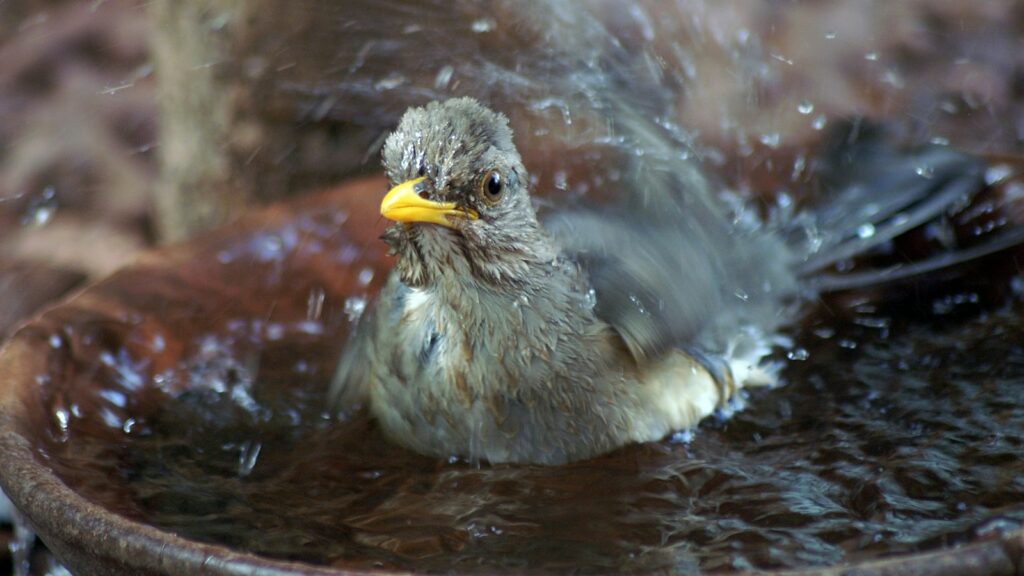
Many bird bath mistakes stem from a fundamental misunderstanding of how and why birds bathe. Birds don’t approach bathing the way mammals do—they’re not soaking to remove dirt but rather conditioning their feathers. A bird’s bathing ritual typically involves a careful approach, testing the water, followed by gentle splashing and wing-fluttering to distribute water through their feathers. This process helps maintain feather condition by removing dust, dander, and parasites while distributing natural oils. Different species have distinct bathing preferences, with some like robins being enthusiastic splashers while others like mourning doves prefer to wade quietly. By observing which birds use your bath and how they interact with it, you can make species-specific adjustments that better accommodate your local avian visitors.
The Importance of Multiple Water Levels
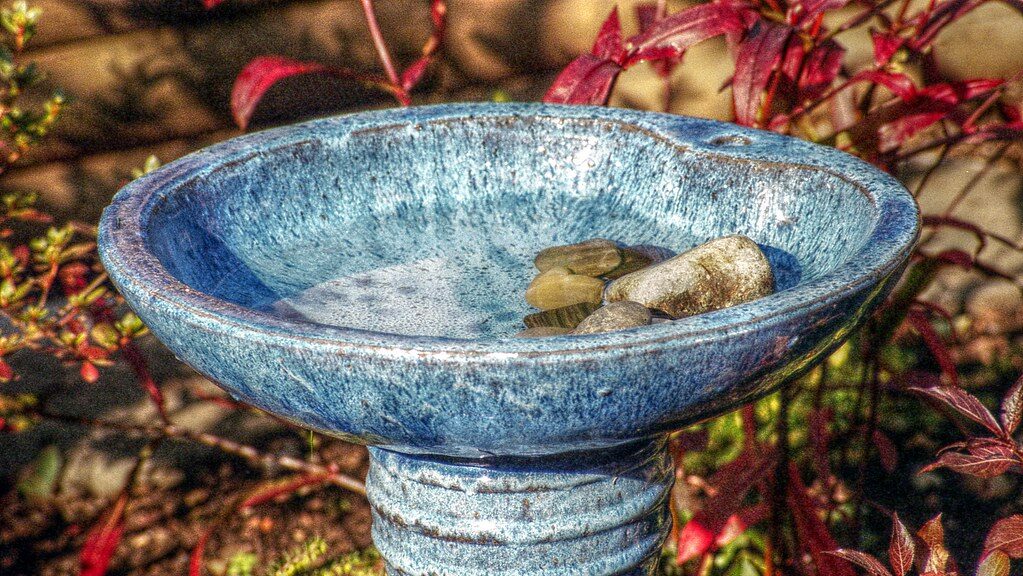
Bird baths with a uniform depth limit the variety of species that can comfortably use them. Large birds like jays and cardinals may avoid baths that are too shallow, while tiny warblers and finches may steer clear of deeper waters. Creating a multi-level bathing experience accommodates the widest range of species. Consider adding a gently sloping basin or creating distinct zones within your bird bath with varying depths. Some commercial baths come with built-in gradients, but you can easily modify existing baths by strategically placing clean rocks, pebbles, or even a small inverted saucer to create shallow areas. The ideal setup includes very shallow edges (¼ inch) that gradually deepen to about 2-3 inches at the center, allowing birds of all sizes to find their comfort zone.
Addressing Water Quality Concerns
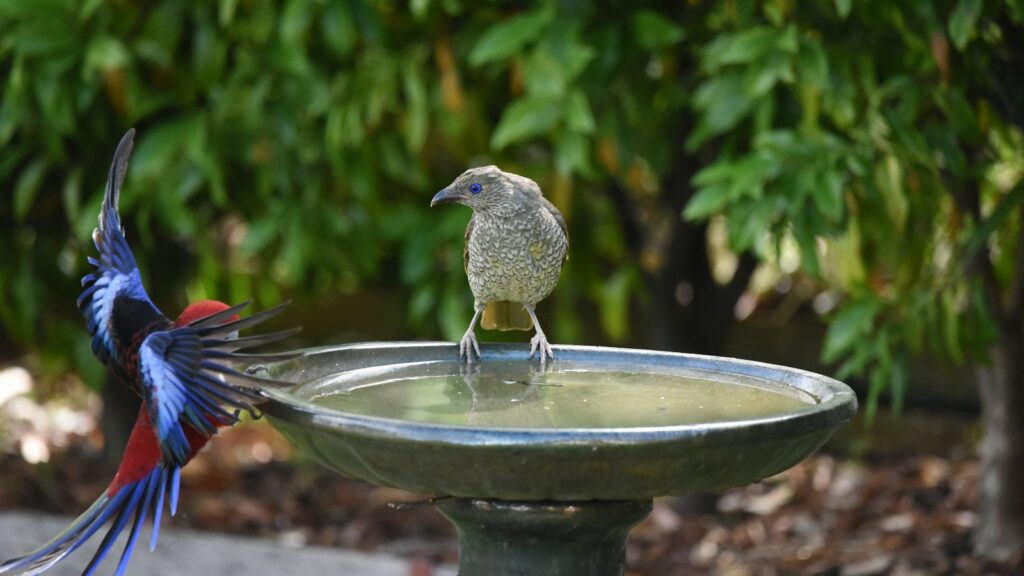
Many bird enthusiasts overlook water quality issues beyond basic cleanliness. Tap water containing high levels of chlorine can be off-putting to sensitive birds and potentially harmful with repeated exposure. If your municipal water contains significant chlorine, consider letting water stand for 24 hours before adding it to your bird bath to allow chlorine to dissipate. Adding chemicals or commercial cleaning solutions directly to bird bath water is another serious mistake, as birds may ingest these substances while bathing or drinking. Even natural additives like apple cider vinegar or essential oils, sometimes recommended online for algae control, can disturb the natural oils in birds’ feathers. The safest approach is using only fresh, clean water and relying on regular cleaning rather than chemical treatments to maintain your bird bath.
The Problem with Bird Bath Additives
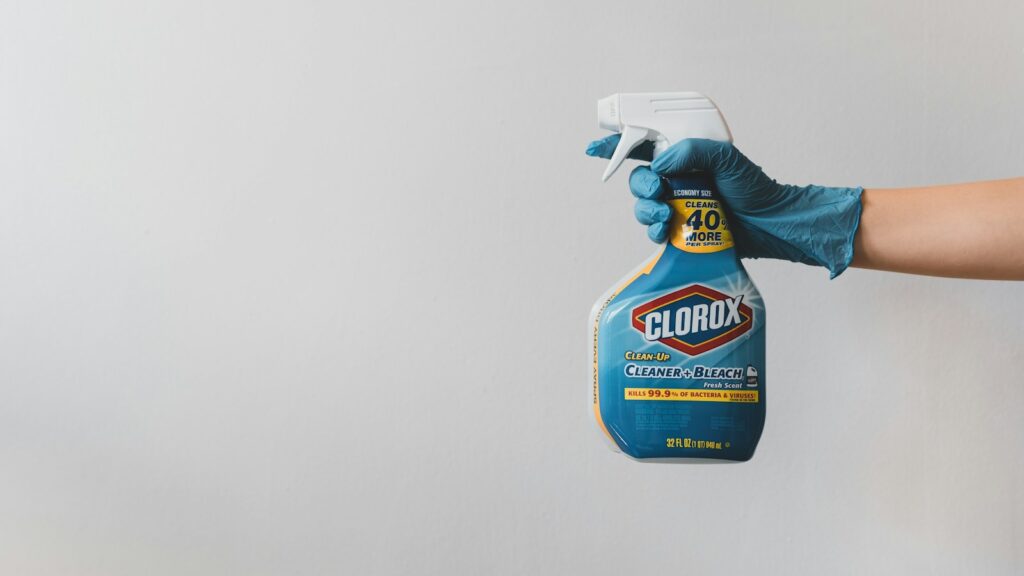
A growing trend is the marketing of commercial bird bath additives claiming to keep water cleaner longer or enhance bird health, but these products often do more harm than good. Copper sulfate, bleach solutions, and commercial algaecides might effectively control algae and bacteria, but they can damage birds’ delicate respiratory systems and feathers. Even natural additives like essential oils may seem harmless but can interfere with the waterproofing properties of feathers that birds rely on for insulation. Some well-meaning bird lovers add food coloring to make water more visible to birds, not realizing this unnecessary chemical exposure may be detrimental. Instead of relying on additives, focus on maintaining clean water through regular changes and proper bath design with good drainage and cleaning access.
Creating Bird Bath Security Features

Birds are constantly vigilant against predators, and they won’t use a bath if they feel vulnerable. A major mistake is assuming that providing water alone is sufficient without considering the birds’ need for security. Birds prefer baths where they can quickly scan their surroundings and access escape routes. Elevating your bird bath on a pedestal increases visibility and can reduce predation risk from ground-dwelling creatures like cats. Placing your bath near thorny shrubs provides quick escape cover while deterring predators. Some bird lovers install multiple smaller baths rather than one large one, creating options that allow different species to bathe simultaneously without competition stress. Consider adding a bell or wind chime nearby—contrary to what you might expect, the gentle sound can alert birds to potential danger while masking your own movements as you observe from indoors.
Conclusion: Creating Your Bird Bath Sanctuary
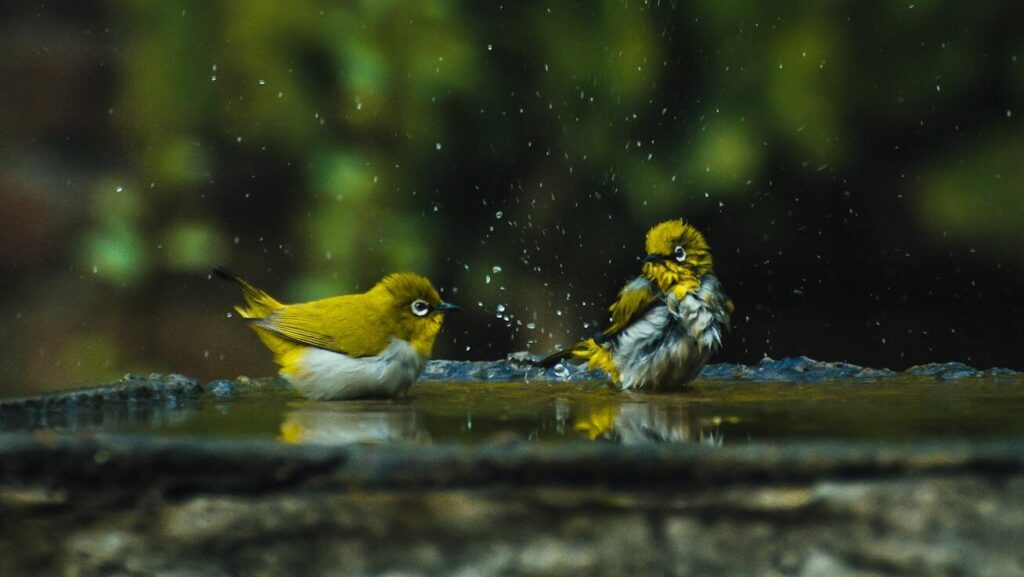
Creating a successful bird bath goes beyond simply providing water—it requires thoughtful consideration of birds’ natural behaviors, needs, and preferences. By avoiding these seven common mistakes, you’ll transform your bird bath from a basic water source into a thriving avian sanctuary that attracts a diverse array of species year-round. Remember that birds communicate with each other about reliable resources, so a well-maintained bath will gradually attract more visitors as word spreads through the avian community. The joy of watching birds splash, preen, and interact at your bath offers a window into their fascinating behaviors while providing them with a critical resource. With regular maintenance and these insights in mind, your bird bath will become not just a feature in your garden, but a vital hub in your local ecosystem that supports bird populations through all seasons.
